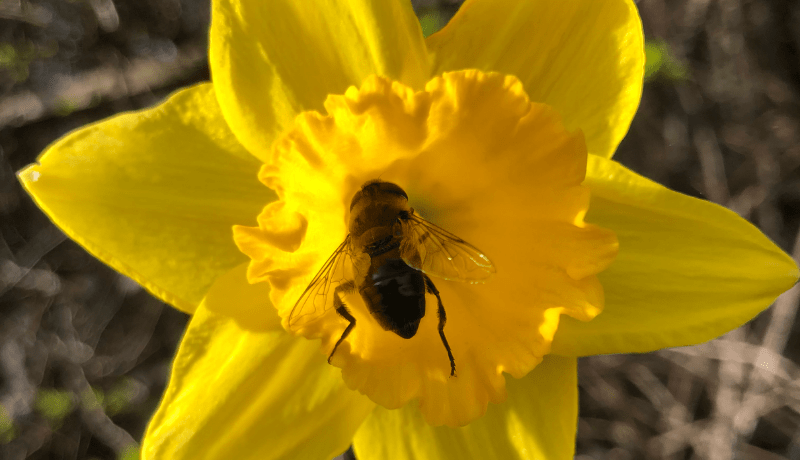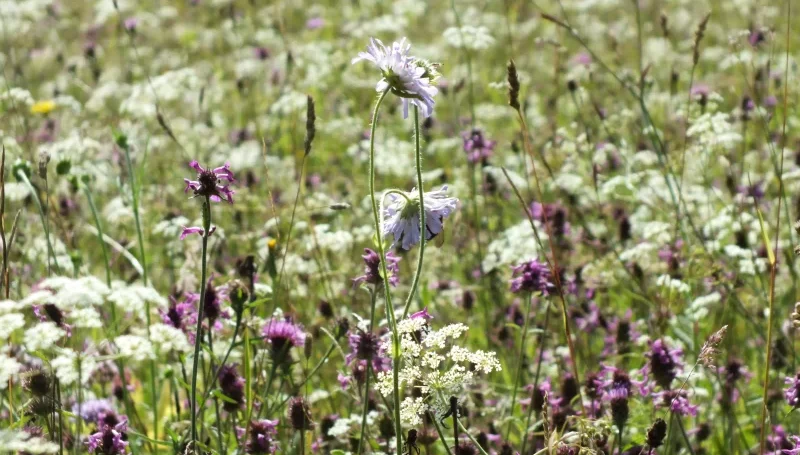Why are bees important?
Bees, along with other pollinators, allow plants to reproduce, which makes much of our food production possible. The hard-working winged invertebrates also pollinate many of the trees and flowers that provide habitats for wildlife. They are, therefore, vital for the preservation of ecological balance and biodiversity, and act as indicators of the state of the environment. According to the Food and Agricultural Organisation of the United Nations, approximately 80% of all flowering plants are specialised for pollination by animals, mostly insects (including bees). Other methods of pollination occur through wind, birds, bats and other insects, but wild bees are among the most important pollinators because they are capable of pollinating on a much bigger scale.
What threats are bees facing?
Bees face many threats and are in decline globally. Here is a summary of the main threats they face.
- Habitat loss: Hollow trees provide nesting for several bee species and a reduction in trees is leading to a reduction in bee homes. Wildflower meadows are also in decline, reducing bee food resources.
- Use of pesticides: The toxicity of pesticides has an adverse effect not only on ‘pests’ but on other insects too, including bees that can be harmed when they pollinate plants that have been sprayed.
- Climate change: Climate change can alter the timing of seasonal blooming, which has an adverse effect on bee nesting and feeding behaviour.
- Parasites and diseases: Parasites and diseases threaten bees, including parasitic mites which can drain bee strength.
- Invasive species: Some non-native species can pose a threat to bees including species that eat bees.

Planting for bees
Bee populations are in severe decline and the plants that we put in our gardens can be important in providing nectar and pollen, as well as nesting habitats.
What is the difference between nectar and pollen?
Bees use pollen and nectar as food. Pollen provides bee grubs with the protein and fat they need to grow, and nectar provides carbohydrates for the energy they need to fly and find a nest. By growing a good mix of flowering plants, bee species will have access to a wide range of pollen and nectar.
Grow different plants for different bees
In Britain we have around 270 species of bee. Different bees have different needs when it comes to flower type.
Honeybees (Apis mellifera) for example commonly found feed on open flowers they can easily reach with their short tongues, such as willows, orchard trees, raspberry flowers and other trees, herbs and shrubs. Whereas garden bumblebees (Bombus hortorum) have a long tongue that allows it to feed from long, tubular flowers such as foxglove, honeysuckle, penstemons and snapdragons.
Growing single, open flowers where the central part of the flower is visible enables a wide variety of bees to access the nectar and pollen. Many flowers are bred to have double flowers which are of little use for bees as they can’t get to the central part of the flower where the pollen and nectar are found.
Different bees are active at different times of the year with some emerging from hibernation in February and others still flying in November. For this reason, it is important to grow flowers from late winter to autumn, or all year round if possible. Aim to have some nectar or pollen-rich plants in flower during winter, such as winter honeysuckle and winter clematis.
Bulbs for bees
Spring flowering bulbs are one of the first flowers to open and will provide bees with a source of pollen and nectar when there’s little else in flower. Planting bulbs that flower over a long season, including early-flowering crocus and late-spring flowering fritillaries will maximise the available pollen and nectar.
Bees like purple!
Flowers in a variety of colours will attract bees, however, they can see the colour purple more clearly than any other colour and some of the best bee plants such as lavender, buddleia, alliums and oregano all happen to have purple or lilac coloured flowers.
Other ways we can help bees
- Stop or limit use of pesticides: Pesticides can be harmful to insects and other wildlife. Many pests provide food for pollinators, so where possible leave them to be controlled naturally. Mulching around plants and regular weeding can keep pests under control rather than using pesticides.
- Provide access to water: Bees will often drink droplets of water they find on grass or flowers, so providing access to a water source will help during dry weather. Keep the water to small shallow pools or spray over plants to prevent bees drowning in deeper water.
- Provide shelter: Like most invertebrates, bees need shelter to nest and hibernate in. They love a shady, sheltered spot such as an overgrown ‘wild’ area with stacked logs or a bee house.




